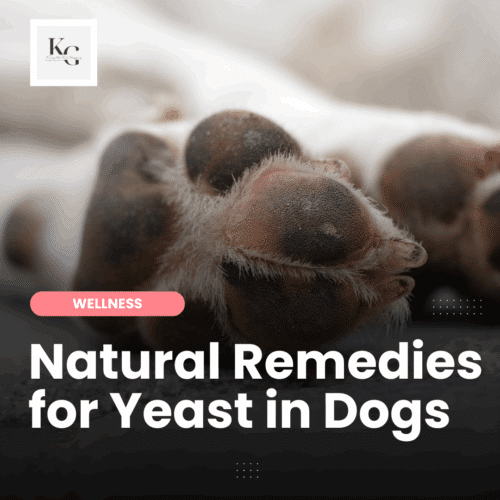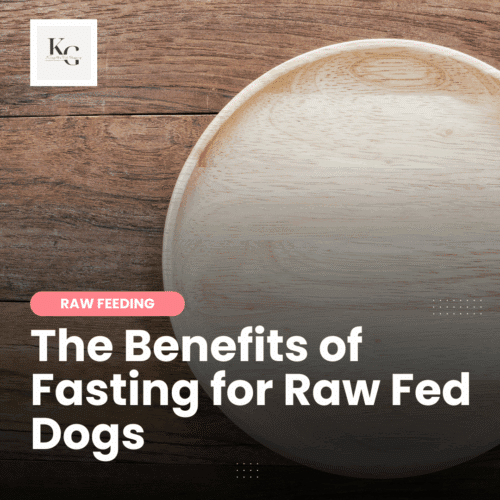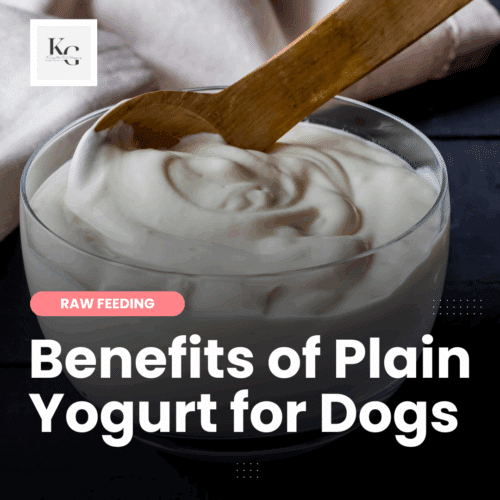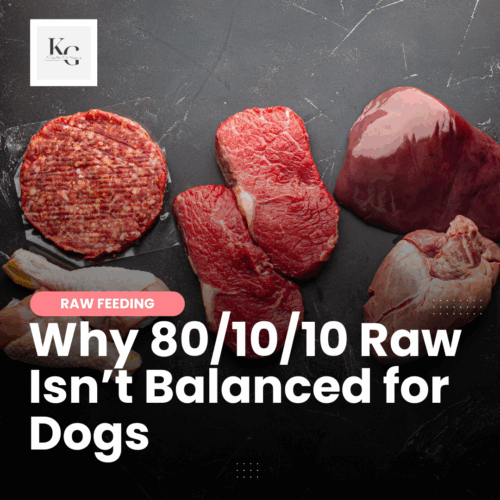Keep the Tail Wagging is supported by pet parents. I occasionally earn a commission (at no additional cost to you) when you click through an affiliate link to one of my favorite products. Thank you for your support. Read More
When it comes to raw feeding, I wonder if people think this diet is too good to be true after reading about the many benefits. Raw feeders are a passionate bunch who love helping people transition their dogs. But some make promises that the diet can't deliver because every dog is different and responds to the diet differently.
In this article, I will share the benefits and what dog owners can expect when they switch to a raw food diet based on my experience. My goal is to make raw feeding a bit more realistic so you're not caught off guard as you start this journey with your dog.
Benefits of Raw Feeding
There are several benefits to switching a dog from kibble to a raw food (or a fresh food) diet. However, not everyone will experience the same benefits at the same level. In this post, I'll compare the benefits to what I experienced with my dogs.
1 – Improved Digestion
Raw diets often contain natural enzymes and beneficial bacteria that can help support healthy digestion in dogs. However, if a dog has a compromised gut, it may take time for its digestion to improve. Alternating proteins and other ingredients is essential to help build a diverse gut microbiome.
To promote a healthy gut with my dogs, I regularly alternate fermented foods and probiotics, switch the main protein in their meals weekly, and ensure they get plenty of exposure to toxin-free soil.
My favorite gut support supplements for my dogs include:
But supplements aren't always necessary. The following fresh foods also support gut health:
- kefir, raw goat's milk (avoid pasteurized and fat-free products)
- plain Greek yogurt
- pureed vegetables
- fermented vegetables
- broccoli sprouts
And taking walks on chemical-free grass and soil also supports the gut microbiome.
2 – Healthier Skin and Coat
The essential fatty acids and nutrients in raw diets can promote healthier skin and a shinier coat in dogs. However, if a dog has a preexisting condition, like allergies, food sensitivities, or yeast overgrowth, a raw diet is only the first step in improving these issues.
Many people are lucky to switch to raw food and see immediate and permanent improvements. However, some dogs need more support.
Adding animal-based Omega-3 fatty acids, like salmon oil, is excellent for skin and coat health. Other foods that support skin and coat health include:
- pasture-raised chicken eggs
- fresh sardines
- plain greek yogurt
- Atlantic salmon (or cooked Pacific salmon*)
- coconut oil
*Pacific salmon contains a parasite that can lead to serious illness in dogs when fed raw, so I always cook the fish for my dogs.
3 – Increased Energy and Stamina
Raw diets provide a more bioavailable source of nutrients, increasing a dog's energy levels and improving their stamina. It's exciting to see senior dogs with the energy of their younger selves after switching to a fresh food diet. However, the increased energy and stamina may not be apparent if a dog has severe joint issues.
Switching to raw alone won't provide the joint support our dogs need. I pour bone broth, a rich source of collagen, over my dogs' meals, and I give them two supplements for joint health:
- WINPRO Hip & Joint is a chewable made from plasma, which fights inflammation, and collagen, which supports joints.
- MYOS Canine Muscle Formula is made from fertilized egg yolks, supports joints, and prevents muscle wasting as dogs age.
4 – Better Dental Health
Chewing on recreation and raw meaty bones may help naturally clean a dog's teeth and gums, potentially reducing plaque and tartar buildup. But I've learned firsthand that counting on raw bones to clean our dogs' teeth is a mistake.
I've fed a raw food diet to seven dogs. Only one needed two dental cleanings, and two teeth were extracted. She can no longer eat heavy chews or recreational bones, because I thought raw meaty bones and air-dried chews were enough to keep her teeth clean.
My dogs still enjoy chews and raw bones, but I also use the following products to promote dental health.
- Teef! for Life – water additive that promotes the oral microbiome of dogs; I add this to my dogs' water dishes twice weekly.
- Mad About Organics herbal oral spray – I saw a difference after two weeks of consistent use; I spray my dogs' teeth three or four times weekly.
- WINPRO Functional Dental Stix – these delicious chews boost dental health and freshen breath using plasma, pre/probiotics, parsley, and collagen.
- Enzymatic Toothpaste – I brush my dogs' teeth twice weekly using an extra-soft, child's toothbrush.
5 – Enhanced Immune System
A balanced raw diet rich in vitamins, minerals, and antioxidants supports a dog's immune system and overall health. Although I've had two dogs that have been diagnosed with cancer, they survived longer than expected (five weeks vs. three days; 1-1/2 years vs. three months).
Although some will label my experience as “anecdotal evidence,” I'm not alone; other raw feeders are reporting healthier raw-fed dogs.
However, raw feeding is just the start.
- My dogs also get daily exercise and engagement.
- I minimize toxic exposure and ensure a healthy detox.
- I maintain a stress-free home environment for my dogs.
6 – Weight Management
Raw feeding can help dogs maintain a healthy weight because it is low in carbohydrates and does not contain processed ingredients and fillers found in commercial pet foods. However, a dog can gain weight if it is overfed, doesn't get enough exercise, is taking prednisone, or has health issues that contribute to weight gain.
Counting on a diet to keep a dog in shape is a mistake.
- I use a raw food calculator to determine how much to feed my dogs.
- I weigh every meal to avoid over- (or under-) feeding my dogs.
- I feed meals of raw meaty bones, and I fast them at least once weekly.
- My dogs get daily exercise and engagement.
7 – Reduced Allergies and Sensitivities
Eliminating common allergens, such as grains and artificial additives, found in commercial pet foods may help alleviate allergy symptoms in some dogs. A raw-fed dog's robust immune system will also reduce environmental allergy symptoms.
Or, at least, that's what we're told.
Allergies and sensitivities have been reduced (and eliminated) with my dogs, but not all dogs will have the same experience. Sadly, some require an elimination diet to identify sensitivities, which can be overwhelming for a new raw feeder, and medication to combat environmental allergies.
Feeding fresh food can help reduce symptoms by strengthening the immune system, but the diet may not be a cure alone. Other items to add to the diet to help our dogs include:
- Earth Buddy Pet 1000mg Hemp Extract for Dogs
- Daily Dawg Powder for Pets
- Earth Buddy Pet Allergy & Immune Support Mushroom Tincture
- CBD Dog Health EASE
8 – Reduced Risk of Chronic Diseases
We're told a species-appropriate diet can help reduce the risk of certain chronic health conditions in dogs. This may give some the impression that raw feeding prevents chronic diseases, including cancer, but this isn't the case. In my experience, a dog's strengthened immune system will reduce the risk of disease and help our dogs survive longer after a diagnosis.
9 – Raw Feeding Reduces the Risk of Fleas
I once read that biting insects like fleas and mosquitoes don't like raw-fed dogs. They prefer the taste of blood from dogs fed a processed, kibble diet. I doubt any studies exist to prove this theory, but it made sense because my dogs never had fleas. This past summer, I woke up with flea bites because I became lazy about treating my dogs. Feeding fresh food may decrease fleas, but won't eliminate them.
I returned to my summer routine, and the fleas vanished.
- spray my dogs several days weekly with Kin+Kind or Wondercide
- apply Animaleo essential oils Away, Evict, or Oust to repel fleas
- apply CocoTherapy coconut oil to kill and repel biting insects
- add Bug Off garlic granules by Springtime Supplements to their meals
10 – Raw Feeding isn't for Every Dog
I often see raw feeding recommended as a solution to many health issues in social media groups. While it benefits many dogs, it may not be suitable for all dogs. I focus on the individual dog, meeting their needs and adjusting as needed.
For example…
- Geriatric dogs may prefer gently cooked diets to raw diets.
- A dog's chewing style determines the appropriate type of bones and chews.
- A dog may have a high (or low) metabolism, impacting their food intake.
While not every dog can eat raw, I believe every dog can enjoy a diet of fresh food. Fresh food also includes gently cooked, freeze-dried, dehydrated, and air-dried.
11 – Raw Feeding Models
Lastly, there are several raw feeding models, and I've found that many people formulate a diet for their dogs by combining elements from several models. There isn't a singular way to feed dogs a raw food diet.
- I enjoy the simplicity of Prey Model Raw.
- I've found the BARF model diet to be the most accurate and most straightforward to formulate.
- Due to sourcing, I feed a FrankenBarf diet most days.
- And another model helped reduce my fear of fasting my dogs.
I've been feeding raw for over ten years and am still learning something new each year to improve my dogs' diet.
Final Thoughts on Raw Feeding Benefits
I believe a raw food diet is the best diet for my dogs. Feeding fresh food boosts my dogs' gut health and immune system, prevents disease, and promotes longevity. However, this can only happen if I do it correctly. Although I disagree with the pressure to balance every meal, I understand that feeding a nutritionally complete diet is essential. I doubt anyone knows exactly what that looks like, so we will do our best with the information we have.
I feed a diet starting with a ratio of 80% muscle meat, 10% bone, and 10% organ meat. I add a base mix to plug nutritional gaps and other ingredients based on my dogs' needs. I had my dog's nutrient tested twice after I began feeding this way, making tweaks along the way. I worked with a canine nutritionist to finalize my formulation, which works for my dogs.
But this isn't enough. I must continue educating myself about canine nutrition and understanding my dogs' needs.
While raw feeding may be better than a processed diet and offer several benefits to dogs, feeding a nutrient-deficient diet can cause health issues, defeating the purpose of raw feeding.





